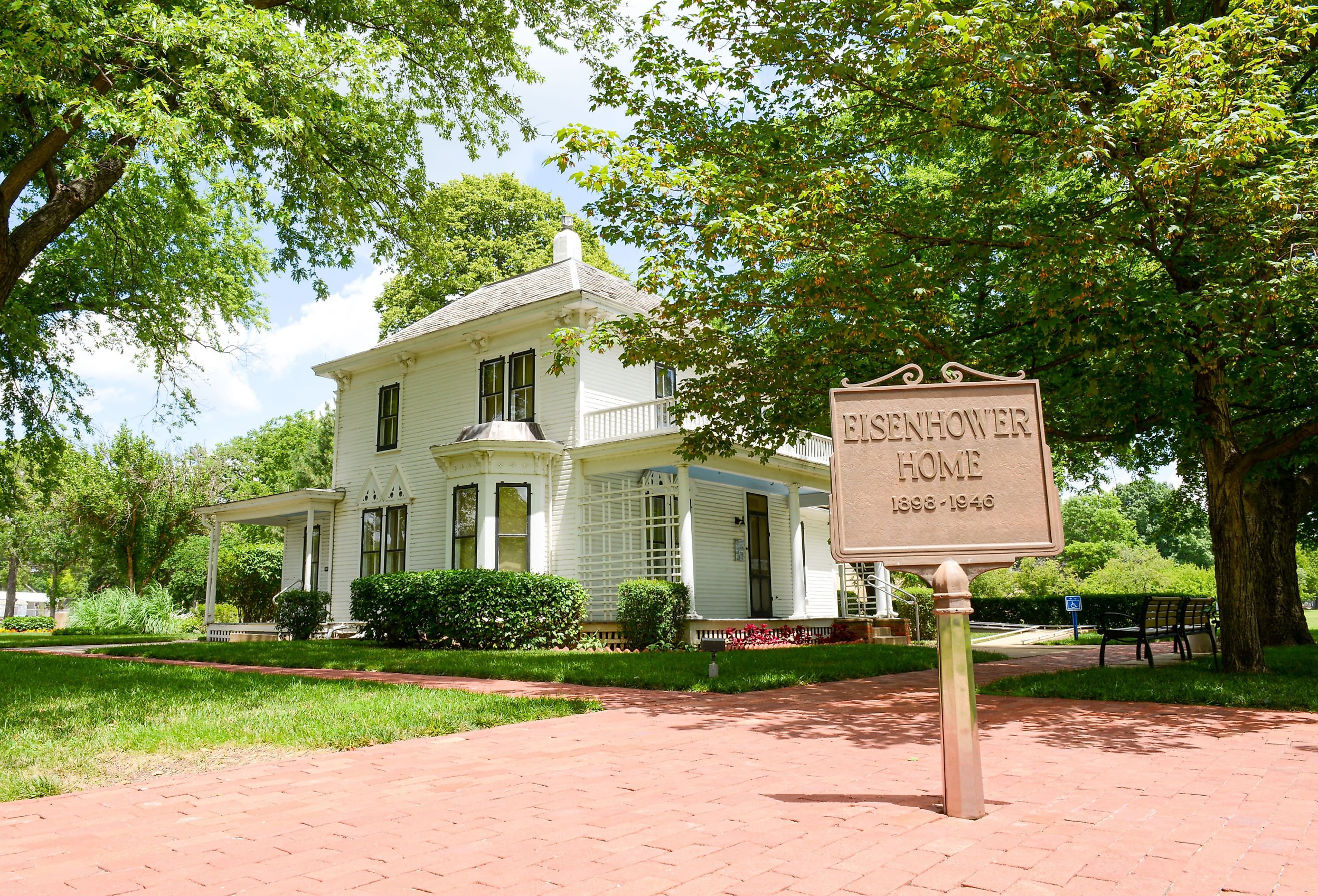
10 Most Underrated Towns In Kansas To Take A Trip To
For many, Kansas is considered a quintessential place where Midwestern and Western cultures converge. Established as a US state in 1861, during the tumultuous years of the US Civil War, Kansas has since come to symbolize the best of the American West. Today, the Sunflower State sees its history of pioneer towns, Old West outlaws, and fortune seekers as the pioneers for a peaceful, Midwestern style of life and work. The state's natural beauty, from its plains to its many rivers, complements the past and present of industrial achievement, ethnic enclaves, presidential boyhood homes, and amenities galore. If underrated compared to major cities like Kansas City and Topeka, these towns offer the traveler what may be Kansas' best features.
Fort Scott
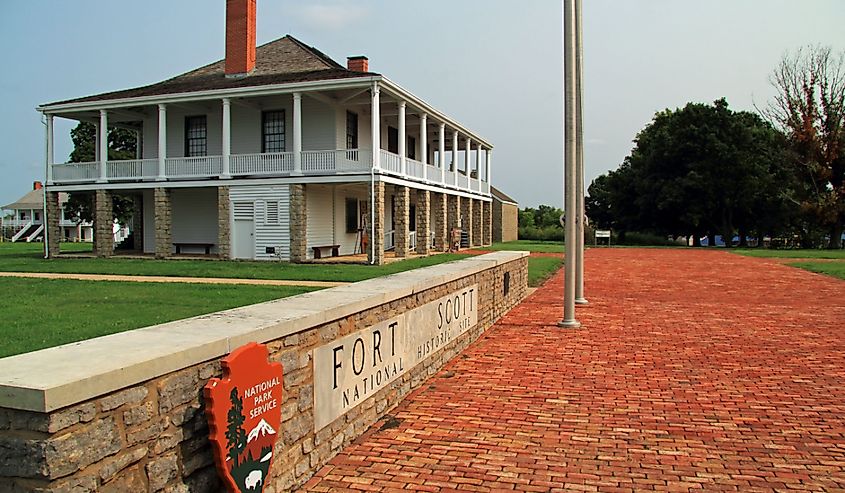
Fort Scott, population 7,600, lies along the Marmaton River, near Missouri, in Kansas' southeast. The town started in the 1840s as a US Army garrison and maintains several historic, primarily Victorian buildings. Today, the Fort Scott Historic Site and its assortment of restored nineteenth-century buildings provide a view of the state's past. The Fort Scott National Cemetery honors the local military tradition as the final resting place of more than 8,000 soldiers and their loved ones. For outdoor enthusiasts, there is much to enjoy at the 155-acre Gunn Park, where boating, biking, jogging, and other pastimes are welcome.
Abilene
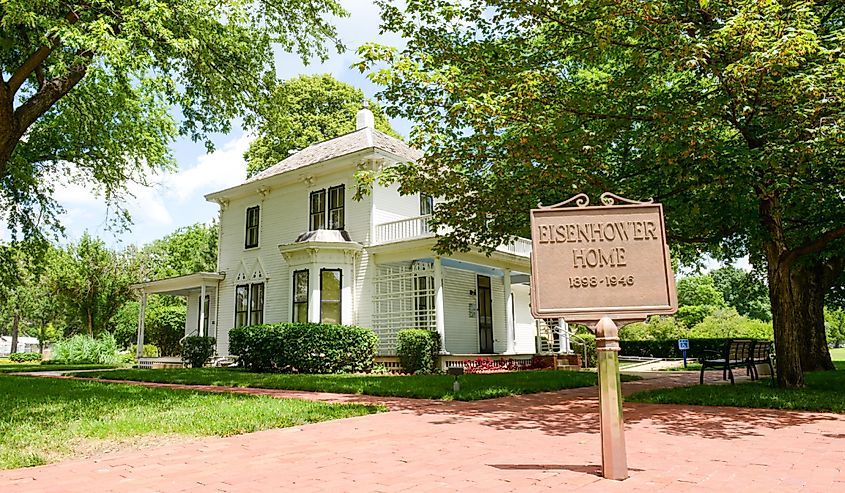
With 6,400 inhabitants, Abilene lies north of the Smoky Hill River's picturesque shoreline in the state's northeast part. Though the town may be small, its outsized history draws thousands of visitors and patriots each year, given its status as the boyhood hometown of former president and World War II hero Dwight Eisenhower. Today, The town hosts the statesman's grave, a presidential library, and a museum. Among Abilene's other attractions, history buffs will enjoy the historic Seelye Mansion, considered among the best of Kansas' architecture. Animal lovers may get a kick out of the Greyhound Hall of Fame Museum, which honors the famous racing dogs.
Coffeyville
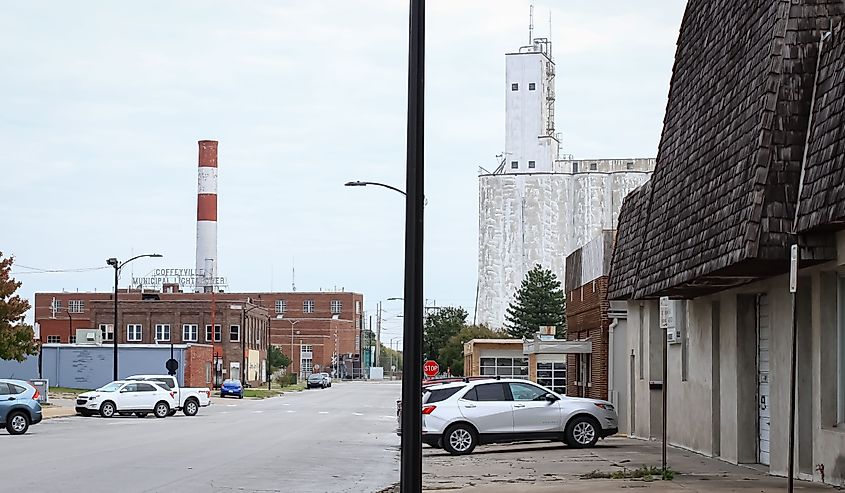
Coffeyville, population 8,700, sits in Kansas' southeast corner, just above the Oklahoma state line. First settled in 1869, the town was a trading post in a brand-new US state. Sited on the Verdigris River, Coffeyville boasts a historic downtown rich in Victorian architecture, much like Fort Scott, the finest example being the Brown Mansion, completed in 1906. The town's Dalton Museum remembers an 1892 bank heist that ordinary citizens took up arms to resist and which left eight dead — four bank robbers and four vigilantes. For more modern, lighter-hearted ideas for outings around town, river walks along the Verdigris are sure to please, while gold fans should head for the Coffeyville Country Club.
Lindsborg
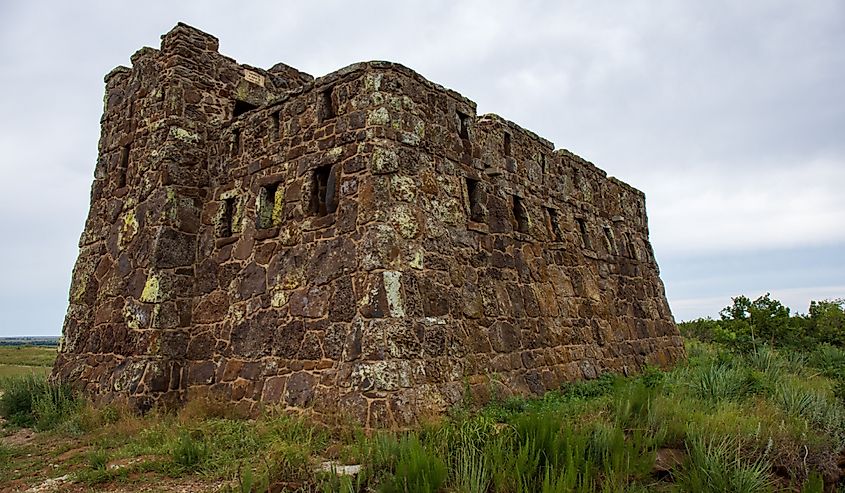
The central town of Lindsborg, with a modest 3,800 inhabitants, offers a glimpse of Kansas' Scandinavian heritage. Known as "Little Sweden," the tale of the town's origins stretches back to Olof Olsson, a brave Lutheran pastor who left their native Sweden for the challenges of the American Midwest and brought a few hardy Swedes with him. The town, first settled in 1869, would eventually draw others from Sweden, other Scandinavian states, Germany, and elsewhere. For visitors craving more local culture, the Birger Sandzen Memorial Gallery showcases the paintings of the Swedish-born artist of the same name. In October every other year, the town hosts the Svensk Hyllningsfest, which celebrates the Swedish and Nordic cultures from which it traces its roots.
Hutchinson
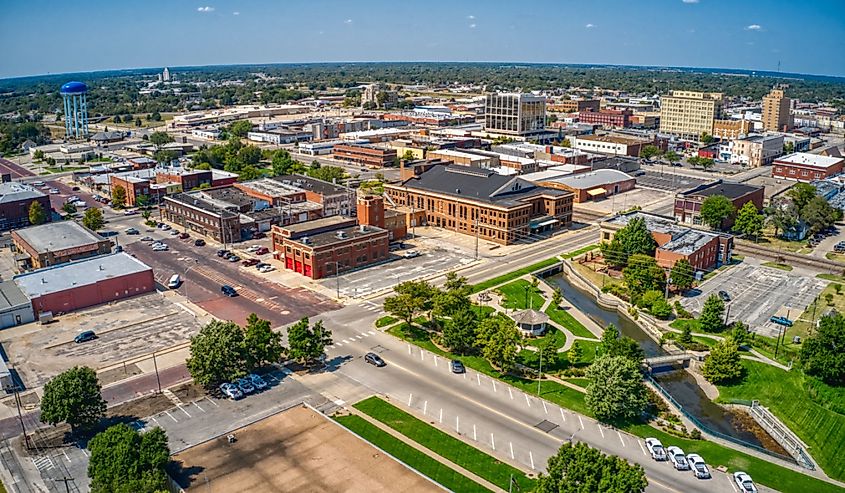
With 39,700 inhabitants, Hutchinson is a larger town along the Arkansas River in central Kansas. Founded in 1871, the place once known as "Temperance City" for its anti-alcohol politics blossomed due to the combined developments of the local railroad, salt mines, and oil production. The town's mining history is on vibrant display at Strataca, a working underground mine that welcomes visitors. Travelers with children may opt for the Hutchinson Zoo or the Kansas State Fairgrounds, where Hutchinson has organized the state fair since 1873. Golf fans will not want to miss a round at the Prairie Dunes Country Club, broadly considered one of the best courses in the United States.
Salina
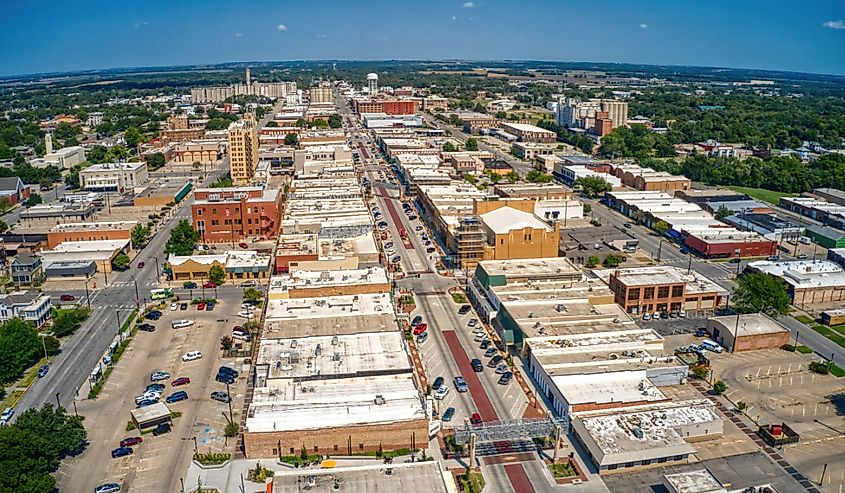
Salina, population 46,200, owes its start to discovering gold in the hills outside town. By the middle of the 19th century, thousands had flocked to Salina to try and strike it rich. The city later transitioned as a center of cattle raising. Now well-positioned at Highways 70 and 135 intersections, Salina benefits from any significant transportation hub's economic and cultural stimulation.
Visitors looking for culture and a little fun will find both at the Smoky Hill River Festival, which Salina holds each June. In addition to its regular exhibitions on local history, the town's Smoky Hill Museum hosts a street fair every September. Tony's Pizza, a prominent local business and employer, also operates the Tony's Pizza Event Center, which annually puts on concerts, performances, and other gatherings. Outdoor lovers can find two parks side by side: Indian Rock Park and the Bill Burke Sports Complex, both of which sit on the banks of the Smoky Hill River.
Dodge City
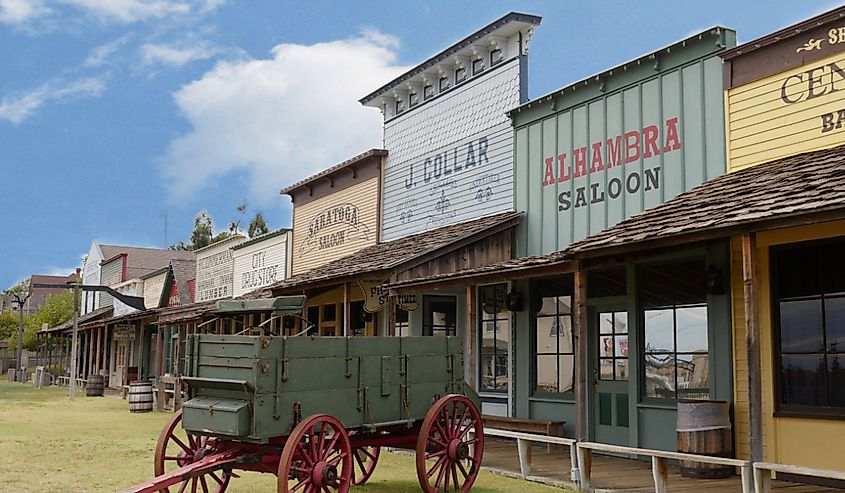
With 27,400 residents, Dodge City blends the best small-town charm and larger-town goings-on. The town has beaten its Old West reputation as a den of crime, lawlessness, and famous outlaws like Wyatt Earp. This is the same place that gave rise to the expression "get out of Dodge" when a person needs to vacate their current location in the name of safety and sanity. These days, Dodge City ranks among Kansas' loveliest small towns.
History buffs will be glad to know the town used to function as a central transit point, with the Jones Plummer Trail, National Old Trails Road, and the Sante Fe Trail all tracing their way through town. The Boot Hill Museum, alternately known as Kansas' Cowboy Hall of Fame, offers Western history and even Western-themed variety shows that enliven the visitors' imaginations about dramatic earlier times. Nature lovers will enjoy the town's twenty-one parks, including the largest, Wright Park, which includes the Dodge City Zoo.
Ottawa
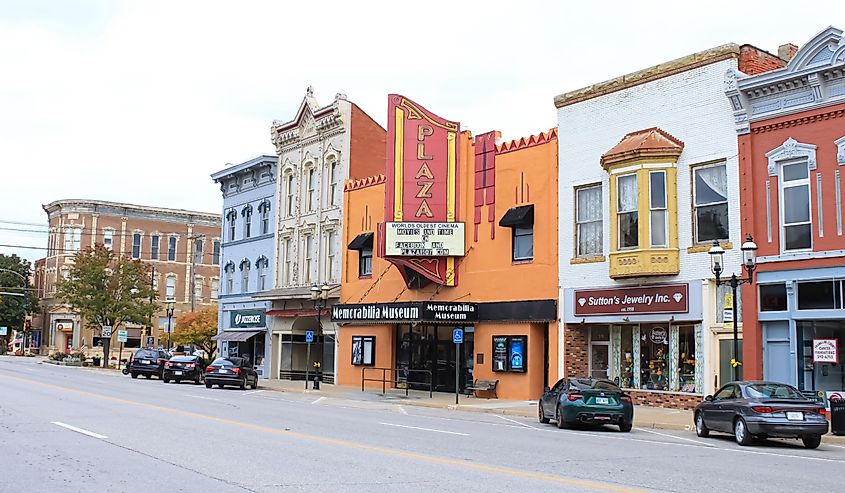
Though it shares its name with the capital of Canada, Ottawa, population 12,600, is a much smaller political capital, being (only) the seat of Franklin County. Founded in 1865 in the east-central part of Kansas near the Missouri border, Ottawa is a quaint university town, given that Ottawa University sits within its urban limits. The town's position across the banks of the Marais des Cygnes ("Swan Marsh") River is a concentration of the best traits in Midwestern small-town life. The Old Depot Museum looks at the golden age of rail, while the historic downtown offers authentic views of nineteenth-century buildings. These include the Plaza Grill and Cinema, a movie house built in 1907 and which is said to be the oldest operating movie theater in the United States. Ottawa's green spaces include sports facilities and Kanza Park, which runs along both banks of the Skunk Run waterway.
Wamego
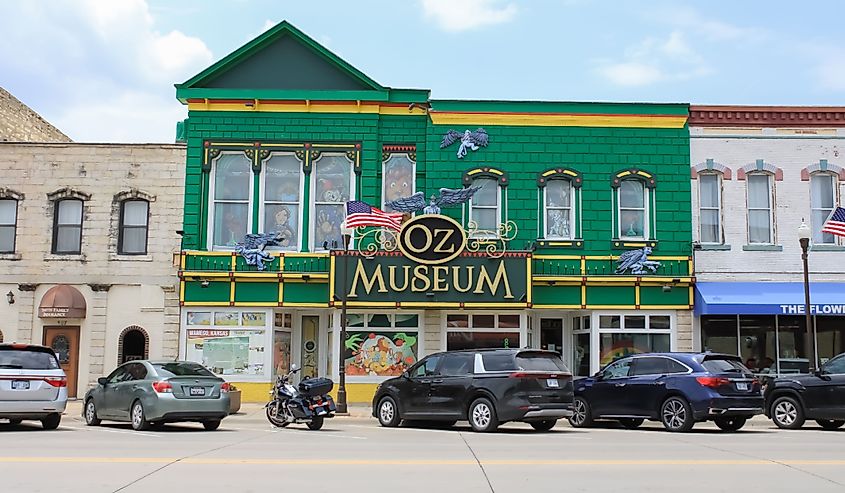
The charming town of Wamego, with 4,900 residents, makes for an ideal, quiet weekend getaway from Topeka or other nearby cities. Seated on the north bank of the Kansas River and first established in the 1860s, the town's tourist draws include a stone Dutch Mill constructed in 1879, the Columbian Theatre built in 1895, and more modern attractions like Wamego City Park. Wamego is also the hometown of L. Frank Baum, who wrote "The Wizard of Oz." Perhaps the town's main point of interest is the Oz Museum, opened in 2004 and dedicated to the legendary film "The Wizard of Oz," which is set in Kansas and elsewhere. The museum holds no fewer than 25,000 artifacts related to the film. Interest from visitors has proven, so several solid Oz-themed businesses have popped up, giving the town a mini-neighborhood known as the "Oz Cluster." Wamego hosts an Oktoberfest celebration every October.
Marysville
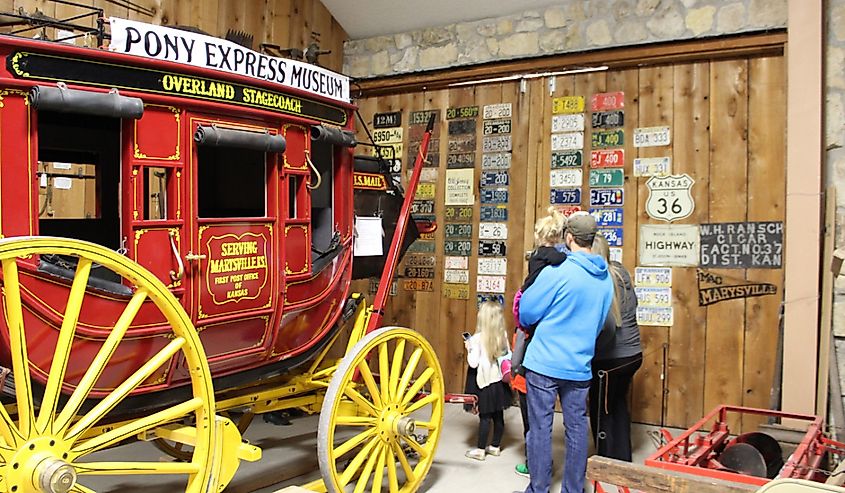
Marysville, population just 3,400, sits in Kansas' northeast corner near the Nebraska state line. For a town of its modest size, Marysville, incorporated in 1861, offers an abundance of cultural interest, namely the Koester House Museum and Gardens. The grounds are a source of local pride, where blossoms accentuate a historic Victorian mansion built in 1876. Nearby, the Marshall County Historic Court Museum tells of the town's history and dynamic present, from its days along the Oregon Trail and the Pony Express postal system to the more curious celebrations of Marysville as "Black Squirrel City," so named for the local population of said mammals. The town's green spaces include parks, converted rail trails, and Alcove Spring Historic Park, which highlights the town's pioneer history.
Kansas' abundant, sometimes underrated qualities are evident in these and other towns. Outside of its larger cities, smaller towns in Kansas showcase the state's fascinating, occasionally dramatic past. Modern-day Kansas is alive and well in places like Fort Scott and Abilene, where patriotic feelings run high; Coffeyville and Dodge City show how far the state has come regarding law, order, and general prosperity. Hutchinson and Wamego suggest Kansas' ability to shape more modern culture, from cultural celebrations like state fairs and golf to achievements in film and architecture. These diverse traditions look bound to continue. Together, they make Kansas, and its small towns especially, places that any traveler would see for themselves.







